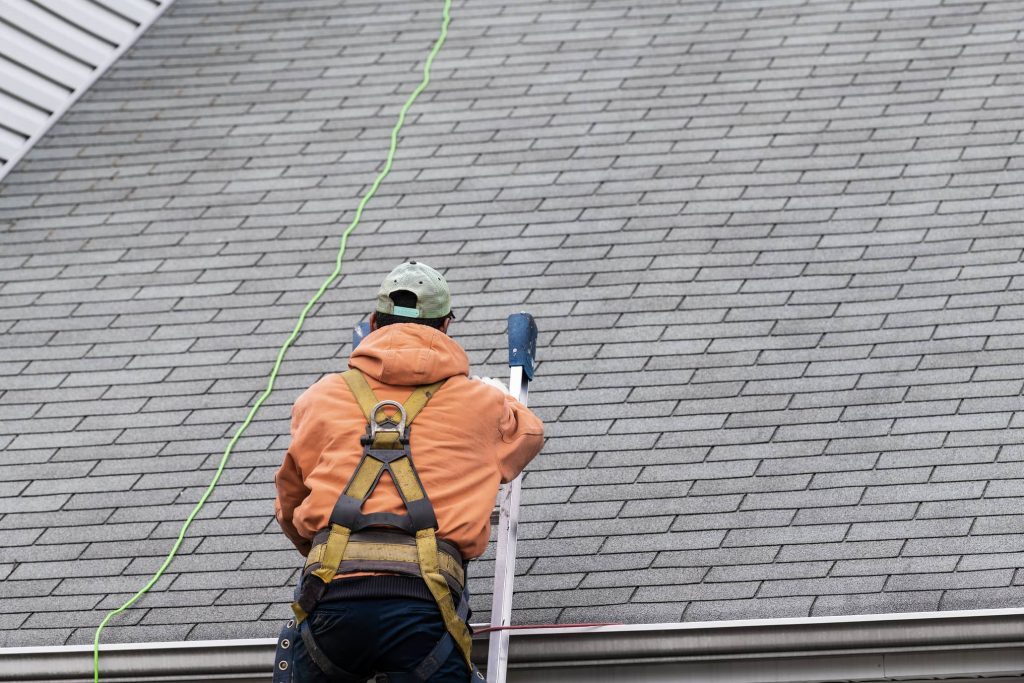So, you’ve noticed that there might be a leak in your roof, but here’s the catch – you don’t have an attic to easily locate the problem. Don’t worry, you’re not alone! Many homeowners face this challenge, but fear not, because I’m here to help. In this article, we will explore some practical tips and methods that will assist you in finding a pesky roof leak, even without the luxury of an attic. By the end, you’ll have the knowledge and confidence to tackle this issue head-on and restore peace of mind to your home.
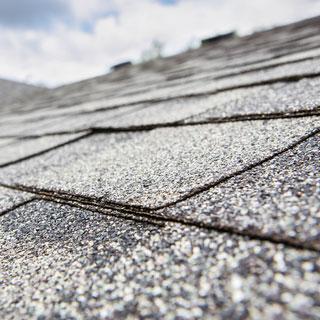
Visual Inspection
When it comes to finding a leak in your roof without an attic, starting with a visual inspection is a great first step. There are several key areas to pay attention to during this process.
Check for water stains on ceiling
One of the most obvious signs of a roof leak is water stains on your ceiling. These stains can vary in size and shape, and may appear discolored or have a brownish hue. Take a close look at your ceilings throughout your home, paying attention to any areas that appear damp or discolored.
Look for mold or mildew
Another visual clue to look out for is the presence of mold or mildew. These can often be found in areas with excessive moisture, so if you spot any black or green patches on your walls or ceilings, it could indicate a leak in your roof. Mold and mildew can not only damage your home, but also pose health risks, so it’s important to address any issues promptly.
Inspect the roof for signs of damage
Lastly, take the time to inspect your roof for any visible signs of damage. This can include missing or damaged shingles, cracked or deteriorated flashing, or any other obvious problems. Grab a pair of binoculars to get a closer look at your roof’s condition, paying particular attention to any areas where different materials intersect, such as chimneys or vents.
Utilize Technology
In today’s digital age, technology can be a valuable tool when it comes to detecting and identifying roof leaks. Consider utilizing the following devices to aid in your search.
Use a thermal camera
Thermal cameras can detect temperature differences, and they can be a useful tool when trying to locate a roof leak. By scanning your ceilings and walls with a thermal camera, you may be able to identify areas where water is seeping in and causing temperature variations. Keep in mind that thermal cameras can be costly, so you may want to consider renting one if you don’t have access to one yourself.
Employ a drone for aerial view
Drones have become increasingly popular in recent years and can be a great asset when it comes to inspecting your roof. By flying a drone over your roof, you can get a bird’s-eye view of any potential problem areas. This can be especially useful for homes with multiple stories or steeply pitched roofs, where accessing certain areas can be challenging.
Use a moisture meter
A moisture meter is a handheld device that measures the moisture content of various materials, including wood and drywall. By using a moisture meter on your ceilings and walls, you can identify areas that have an abnormally high moisture level and may be indicative of a roof leak. This can be a more affordable alternative to thermal cameras, but keep in mind that it may not be as precise.
Test for Leaks
If your visual inspection and technological aids haven’t provided definitive results, it’s time to move on to some practical testing methods.
Run water from a hose
One simple way to simulate rainfall and test for leaks is by using a hose. Start by spraying water onto different sections of your roof, one at a time, while someone else monitors the interior of your home. Pay close attention to any areas where leaks may be suspected, such as around chimneys, skylights, or areas with visible damage.
Check for water accumulation during rainfall
Another method for testing for leaks is to monitor your roof during a rainfall. Take note of any areas where water is pooling or accumulating on your roof, as these could be potential entry points for leaks. Additionally, observe the interior of your home during rainfall for any signs of water dripping or staining.
Check Roof Penetrations
Roof penetrations, such as chimneys, vents, skylights, and dormers, are vulnerable areas that can be prone to leaks. It’s important to thoroughly inspect these components to ensure they are properly sealed and in good condition.
Inspect chimneys and vents
Examine your chimney and any vent pipes that protrude through your roof for any signs of damage or deterioration. Look out for cracked or missing flashing, loose mortar, or damaged seals. Additionally, check for any vegetation growth around these areas, as it may indicate water penetration.
Examine skylights and dormers
If you have skylights or dormers, they should also be inspected for potential leaks. Check the seals around these structures for any signs of wear or damage, and ensure that they are properly attached to your roof. Look for any cracks or gaps that could allow water to seep in and address them promptly.
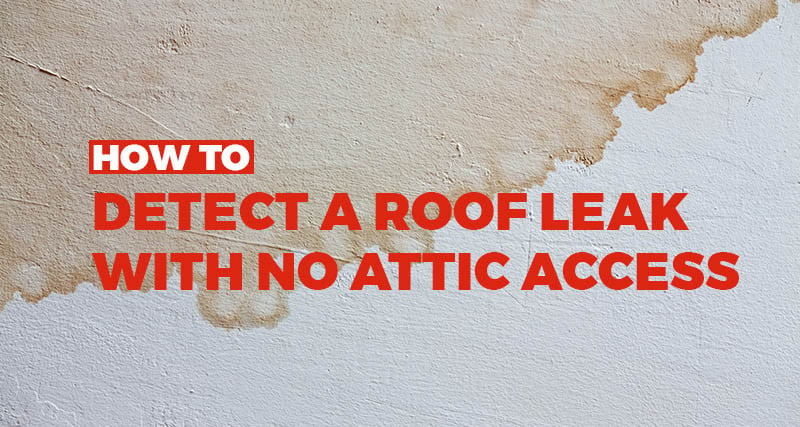
Check Flashings
Flashings are essential components that provide a watertight seal between your roof and other structures, such as walls, chimneys, and skylights. It’s crucial to inspect these areas to ensure their integrity.
Examine roof-to-wall connections
The connection between your roof and walls is particularly susceptible to leaks. Check the flashings along these areas for any signs of damage or separation. Look for loose or missing flashing, deteriorated sealant, or gaps that could allow water to enter. Address any issues promptly to prevent further damage.
Inspect around chimneys and skylights
The flashing around chimneys and skylights should also be thoroughly inspected. Look for any signs of corrosion, bent or damaged flashing, or improper installation. These areas are prone to leaks, so it’s important to ensure that the flashing is in good condition and properly sealed.
Inspect Gutters and Downspouts
Gutters and downspouts play a crucial role in directing water away from your roof and home. It’s essential to regularly inspect and maintain these components to prevent water from seeping into your roof.
Check for cracks or holes
Inspect your gutters for any cracks, holes, or other damage that could impede proper water flow. Pay attention to any areas where the gutter sections connect, as leaks often occur at these joints. Additionally, check for any loose or missing gutter hangers that may affect the stability of your gutter system.
Ensure proper drainage
Make sure your downspouts are securely attached and directing water away from your home’s foundation. Ensure that the downspout extensions are long enough to carry water at least three feet away from your home’s exterior. Clogged or improperly installed gutters and downspouts can lead to water accumulation on your roof, increasing the risk of leaks.
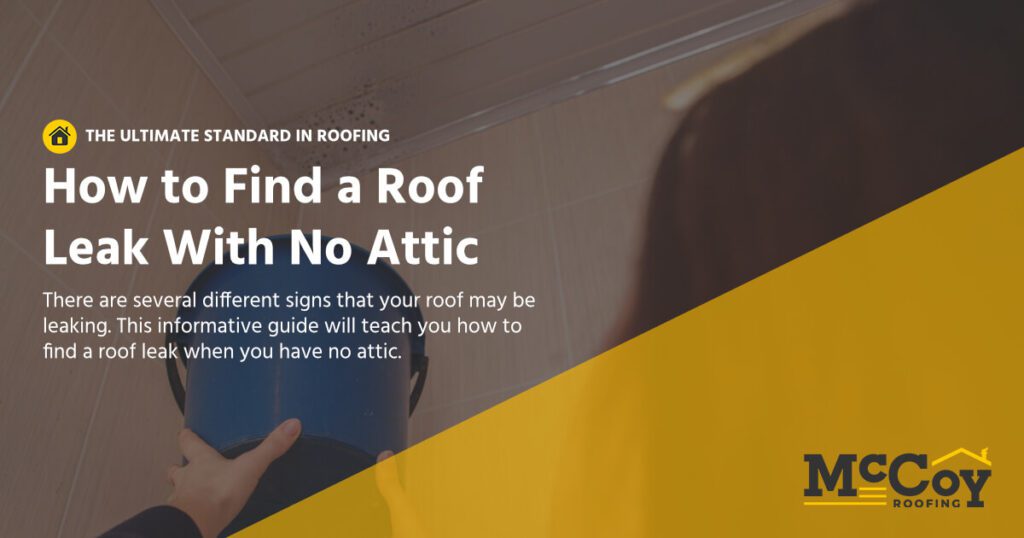
Look for Evidence in the Attic
Even if you don’t have a traditional attic space, you may still have access to an upper floor or crawl space. Checking these areas can provide valuable clues about the presence of a roof leak.
Inspect the top floor for water damage
If you have multiple levels in your home, inspect the ceilings and walls of the highest floor for any signs of water damage. Look for water stains, discoloration, sagging drywall, or peeling paint. These are indicative of a leak and should be addressed promptly to prevent further damage.
Check for wet insulation
In some cases, a roof leak may not be immediately visible from the interior of your home. If your roof has insulation between the roof deck and the ceiling, look for damp or wet insulation during your inspection. Wet insulation can be a sign of a hidden leak and may require further investigation.
Monitor Interior During Rain
One of the most effective ways to identify a roof leak is by observing your interior during rainfall. Keep a close eye on the following areas to spot any signs of water intrusion.
Observe for water drips or stains
During a rainfall, watch for any water drips or stains on your ceilings, walls, or floors. Take note of the exact location and try to trace the source of the water. It’s important to act quickly to prevent further damage and address the underlying cause of the leak.
Check for increased humidity levels
Another indicator of a roof leak can be an increase in humidity levels within your home. If you notice excessive condensation on windows or an overall muggy feeling in the air, it may be a sign that water is infiltrating your roof. Use a humidity monitor to measure the indoor humidity levels and compare them to normal ranges.
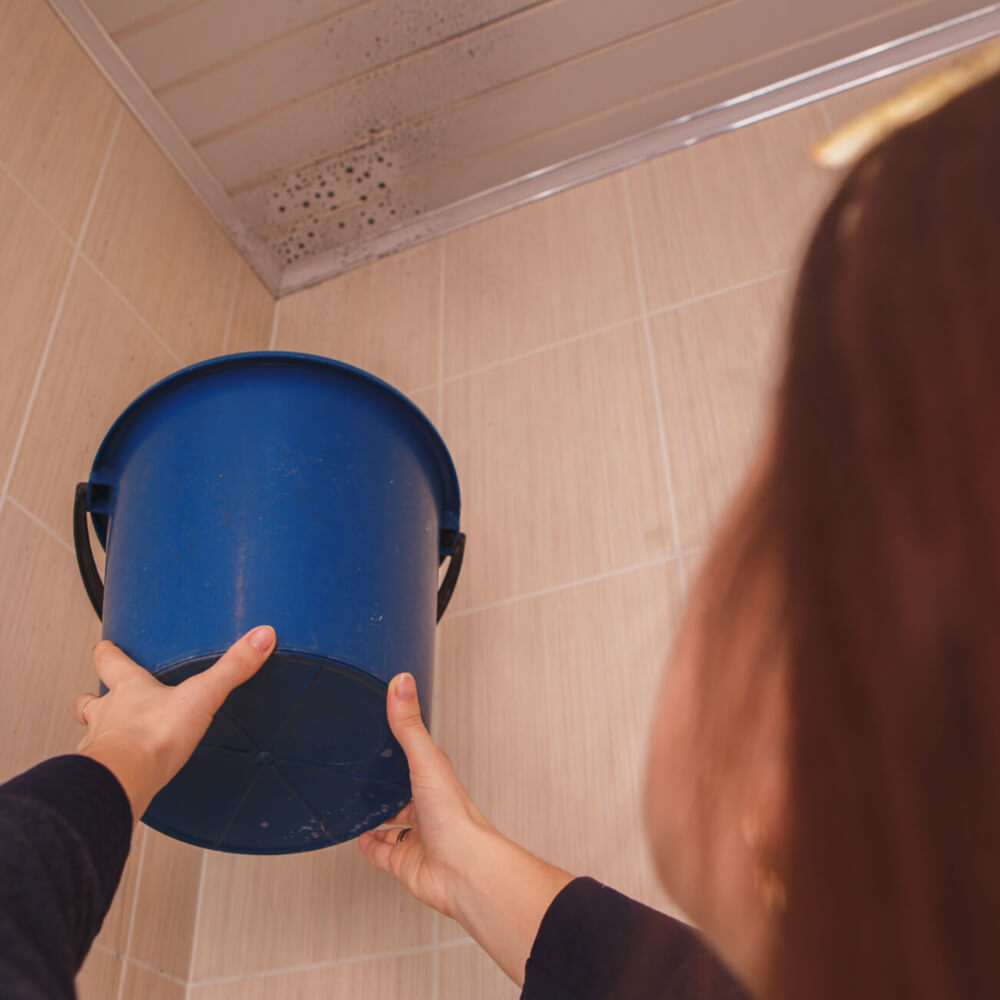
Get Professional Help
If your attempts to locate a roof leak have been unsuccessful or if you feel uncomfortable performing the inspections yourself, it’s always a good idea to seek professional assistance.
Hire a roofing contractor
A qualified roofing contractor has the knowledge and experience to identify and repair roof leaks. They can conduct a comprehensive inspection, provide an accurate diagnosis, and offer the appropriate solutions. Hiring a professional ensures that the issue is handled correctly and can save you time and money in the long run.
Consult a leak detection service
In cases where a roof leak is particularly elusive or requires specialized equipment, you may want to consider consulting a leak detection service. These professionals utilize advanced technology and techniques to pinpoint the exact location of leaks, even if they are hidden within your roof or walls. While their services may come at an additional cost, they can provide peace of mind and expedite the repair process.
Conclusion
Finding a leak in your roof without an attic can be challenging, but it’s crucial to address the issue promptly to prevent further damage to your home. By conducting a thorough visual inspection, utilizing available technology, and performing practical tests, you can increase your chances of identifying the source of the leak. Remember to check roof penetrations, flashings, gutters, and downspouts, as well as monitor your interior for signs of water damage during rainfall. If needed, don’t hesitate to seek professional help from a roofing contractor or leak detection service. By taking proactive steps, you can protect your home and ensure a dry and safe environment for you and your loved ones.
